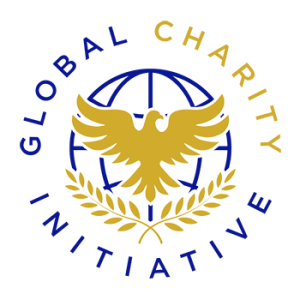Alarming Increase in Hunger in Africa after the Surge of the Pandemic
In Africa, hunger is increasing at an affrighting rate. Africa was reported to have the second-largest number of undernourished people in 2018 after Asia. The Covid-19 pandemic and many other disasters like drought, and economical conflicts have washed back the continent of years of its progress.
Hunger in Africa
Is deteriorating mainly across 6 countries which include Ethiopia, South Sudan, Kenya, Uganda, Sudan, and Somalia. Across these borders, a total of 7 million people are food insecure and severe malnutrition, and another 12.8 million children face the risk of starvation.
The surge of Covid-19 in 2020 led to the failure of providing aid to African countries. A recession in the global economy and the declining health of people all around the world made Africa less of a priority for them. This resulted in 90% of the 10-year-olds from low-income households missing their schooling, 130 million of the population becoming acutely food insecure, and 783 million people of Sub-Saharan Africa without clean water.
Intolerable Hardship
Africans represent 70% of the world’s poorest population. After the Covid-19 crisis, one in three Africans, i.e. 422 million, are below the poverty line. The World Food Programme, WFP, reported that around 80% of the population in some areas has restored to eating watermelon seeds to fill their stomachs. Moreover, local farmers have reported that droughts and sandstorms have turned the fields infertile. During an interview with DW, a local farmer Najoro said that they haven’t harvested anything for the past two years. They have been eating locusts, a crop pest, to survive these trying times.
Countries like Zimbabwe and Angola will need food aid in the first half of the year 2021 as 40% of the crops and livestock are at risk. A WFP global spokesperson reported, “Abnormal dryness is hampering the 2020-21 rainy season, with little to no rainfall.”
Abandoned Commitments
Since the beginning, many countries across the globe have turned their backs on the African black community. Back in 2012, the USA alongside many other rich world nations abandoned its commitment to donate a total of $7.3 billion to Africa to end its hunger crisis. They left this issue in the hands of private corporations to distribute $3 billion over 10 years, which is only 41 percent of the amount they initially promised.
In light of current issues, the black community in Africa has faced more dire situations compared to the black communities of the USA and UK. The death ratio of black people in Africa due to the coronavirus is 20 percent more than in the USA due to the lack of resources and vaccines available in the continent. In addition to this, 15,000 children, as well as 800 adults, die daily due to unsanitary living conditions and starvation in Africa.
Furthermore, the United States Agency for International Development, USAID, has failed to provide decent living conditions, clean water, food, and medical equipment to Africans over the years due to corruption, mismanagement, and other political obstacles. This has led to physical and mental development delays in 3.2 million children and a high infant mortality rate in Sub-Saharan Africa.
Light at the end of the tunnel
Many non-profit organizations like Feed my Children have taken it upon themselves to help provide necessities and improve conditions of the countries on the brink of disaster. Countries like Canada and Australia have generously donated large sums of money to these organizations to support famine relief. These organizations work tirelessly to alleviate food shortages and provide around 10 million food boxes daily to countries like Somalia and Ethiopia.
In addition to this, these non-profit centers work to provide homes to the orphan, abandoned children and have built more than 550 children villages. They work to supply food, shelter, and education to the children of South and East Africa.
On the other hand, there are non-profit organizations like Green peace Africa that aim to stop climate change and have planted over 50 million trees. They also promote eco-logical farming to help local farmers earn their livelihood and get food stability.
In addition to Covid-19, many Africans are also a victim of HIV/AIDS and heart diseases due to less amount of blood present in their bodies. Many organizations provide vaccines, medical equipment, and blood donations to improve health care situations across the continent. They also offer first aid training programs and educational programs to enhance people’s knowledge on this issue.
Their hard work and dedication have resulted in a decrease in water-borne illnesses and fresh and clean water available for most of Madagascar and Sudan. This in turn has also paved the way for farmer’s livestock and other animals to drink clean, uncontaminated water.
Also, these non-profit organizations have been able to boost access to healthcare and education by 20 percent throughout Zimbabwe and Sub- Saharan Africa. Additionally, they have also been able to alleviate hunger in Africa by feeding more than 10 million daily.
Furthermore, the determination of these organizations has raised awareness about the current situation in Africa, and many companies like H&M, J. Crew, and Neutralizer have found potential in Africa and given employment opportunities to many citizens. This has improved the continent’s GDP per capita income by 10 percent.
In conclusion, Africa has a long way to go but the continent has started taking steps in the right direction and it is estimated that by the year 2030, Africa will have eradicated its extreme poverty by 45 million.




